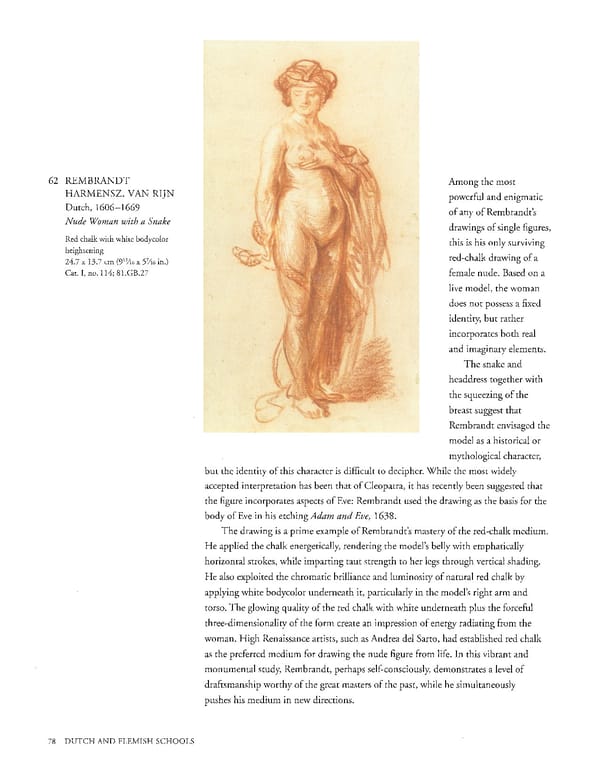62 REMBRANDT Among the most HARMENSZ. VAN RIJN powerful and enigmatic Dutch, 16061669 of any of Rembrandt's Nude Woman with a Snake drawings of single figures, Red chalk with white bodycolor this is his only surviving heightening 24.7 x 13.7 cm (9 11/16 x 5 7/16 in.) redchalk drawing of a Cat. I, no. 114; 81.GB.27 female nude. Based on a live model, the woman does not possess a fixed identity, but rather incorporates both real and imaginary elements. The snake and headdress together with the squeezing of the breast suggest that Rembrandt envisaged the model as a historical or mythological character, but the identity of this character is difficult to decipher. While the most widely accepted interpretation has been that of Cleopatra, it has recently been suggested that the figure incorporates aspects of Eve: Rembrandt used the drawing as the basis for the body of Eve in his etching Adam and Eve, 1638. The drawing is a prime example of Rembrandt's mastery of the redchalk medium. He applied the chalk energetically, rendering the model's belly with emphatically horizontal strokes, while imparting taut strength to her legs through vertical shading. He also exploited the chromatic brilliance and luminosity of natural red chalk by applying white bodycolor underneath it, particularly in the model's right arm and torso. The glowing quality of the red chalk with white underneath plus the forceful threedimensionality of the form create an impression of energy radiating from the woman. High Renaissance artists, such as Andrea del Sarto, had established red chalk as the preferred medium for drawing the nude figure from life. In this vibrant and monumental study, Rembrandt, perhaps selfconsciously, demonstrates a level of draftsmanship worthy of the great masters of the past, while he simultaneously pushes his medium in new directions. 78 DUTCH AND FLEMISH SCHOOLS
 Masterpieces of the Getty Museum: Drawings Page 78 Page 80
Masterpieces of the Getty Museum: Drawings Page 78 Page 80